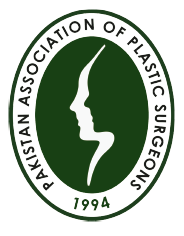
Breast augmentation, or augmentation mammoplasty, is a surgical procedure that aims to increase the size, shape, or fullness of the breast.
The patient/person usually comes to the attending surgeon with.
Breasts that are naturally small
Restore breast size and shape after pregnancy, weight loss or breastfeeding
Restore symmetry when the breasts are asymmetrical
Restore the breast or breasts after surgery Breast augmentation is done commonly by putting a synthetic implant underneath the breast or chest muscle. An implant is a sac filled with either sterile salt water (saline) or a material called silicone. There are different ways to place breast implants:
In the most common technique, the surgeon makes a cut (incision) on the underside of your breast, in the natural skin fold. The surgeon places the implant through this opening. Your scar may be a little more visible if you are younger, thin, and have not yet had children.
The surgeon may make a cut around the edge of your areola This is the darkened area around your nipple. The implant is placed through this opening. You may have more problems with breastfeeding and loss of sensation around the nipple with this method.
The implant may be placed through a cut under your arm. The surgeon may perform this surgery using an endoscope. This is a tool with a camera and surgical instruments at the end. The endoscope is inserted through the cut. There will be no scar around your breast. But, you may have a visible scar on the underside of your arm.
A saline implant may be placed through a cut near your belly button. An endoscope is used to move the implant up to the breast area. Once in place, the implant is filled with saline. A relatively new method of doing breast augmentation is by fat transfer. This is done by taking fat from persons own body through some specialized equipment and then injected into the breast.
Will breast augmentation increase my risk of breast cancer?
This is one of the most frequently asked questions by women considering this surgery. Many studies have shown that women who get implants are not at an increased risk for getting breast cancer. In addition, implants do not delay the detection of breast cancer. Should I wait to have a breast augmentation until after childbirth? The decision to have a procedure is a personal one. There is never a “right” or a “wrong” time. A woman may enjoy the results of an augmentation prior to her decision to have a family. Breast augmentation will be unlikely to change the ability to breastfeed a baby. However, there is a slight risk that sensation could decrease following augmentation and may possibly interfere with the reflexes required for breastfeeding. Breasts, whether they are augmented or not, will often lose volume and fall after the increase and subsequent decrease in size after childbirth and breastfeeding. This volume loss may occur due to natural hormonal changes and may occur whether or not a woman actually breastfeeds her baby. What size breast implants should I get? The size of implants you choose depends on a number of factors, including your ultimate appearance goals and your individual frame. Just as the same bra or even a T-shirt may fit different individuals completely differently according to their chest size and shape, the same size implant may look completely different from patient to patient. During the consultation the implant size and placement will be carefully chosen to fit each patient individually.
How long is the surgery?
On average, the surgery takes 2-4 hours.
Will I need to stay in the hospital?
Almost all who has breast augmentation is able to safely leave the hospital the same day after surgery. In rare cases, you may required to stay in the hospital for a night if you 're having a hard time with nausea or have other health problems that need to be monitored.
When can I return to work?
This depends on your job and its physical demands. Some general guidelines are: Upper arm movements, like reaching, should be avoided for the first 1-2 weeks. Lifting anything heavier than 5 pounds(2.5kg) should be avoided for 6 weeks after the operation. This lifting restriction may prevent some women from returning to work.


